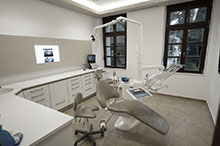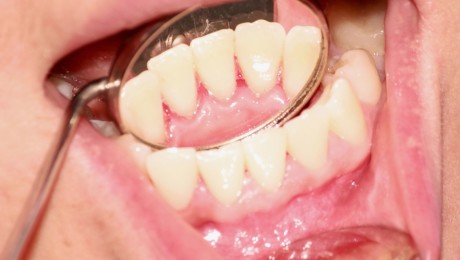Gingivitis Treatment
The focus of treatment for gingivitis is removal of the etiologic (causative) agent, plaque. Therapy is aimed at the reduction of oral bacteria, and may take the form of regular periodic visits to a dental professional together with adequate oral hygiene home care. Thus, several of the methods used in the prevention of gingivitis can also be used for the treatment of manifest gingivitis, such as scaling, root planing, curettage, mouth washes containing chlorhexidine or hydrogen peroxide, and flossing.
Interdental brushes also help remove any causative agents. At home oral hygiene therapy to eliminate gingivitis must be aimed at increasing patient motivation and teaching patients the proper techniques to remove bacteria from their teeth and gingiva. Patients are taught how to brush properly and are advised to brush twice daily for two minutes with a toothpaste that contains fluoride. They are also taught how to floss properly and advised to floss at least once daily. Oral hygiene aids must be chosen for each patient to target their specific needs and abilities.
A patient’s oral hygiene care at home must be combined with regular periodontal therapy at the dental office to remove calculus (tartar). Supragingival and subgingival calculus can be present. Calculus is removed by a dentist or dental hygienist using hand, sonic or ultrasonic instruments. The periodontal tissues must be evaluated at subsequent dental appointments to keep the diagnosis current. Both in-office treatment and home care must be modified as necessary based on the re-evaluation.
Steffens, J. P.; Santos, F. B. A.; Sartori, R.; Pilatti, G. L. (2010). “Preemptive Dexamethasone and Etoricoxib for Pain and Discomfort Prevention After Periodontal Surgery: A Double-Masked, Crossover, Controlled Clinical Trial”. Journal of Periodontology 81 (8): 1153–1160. doi:10.1902/jop.2010.100059. PMID 20367520. edit
Treatments
The Office

This is a modern dental clinic, with high-end equipment, adapted to the requirements of modern medicine in the dental field.






